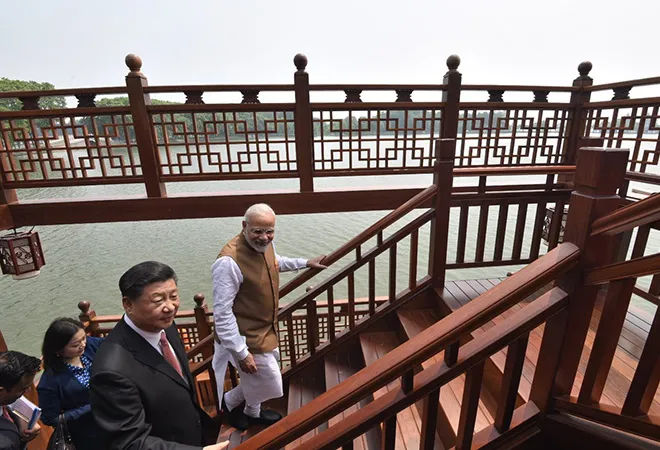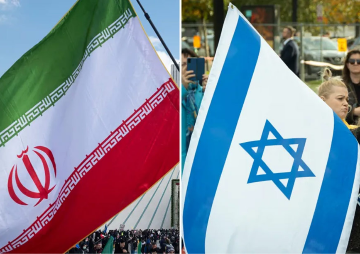No matter how you do the sums, you cannot come up with an easy answer as to whether the Wuhan summit between Prime Minister Narendra Modi and President Xi Jinping has been a success or not.
That is because, the outcome of this kind of a summit can only be determined not through the communiques and words, but action taken on the ground. Many things are not visible right now and will unfold on the ground in the coming months and years.
Though, by pulling the rug under the feet of the Dalai Lama, assuring China that India will not militarily intervene in Maldives and refusing to have the Australians at the Malabar naval exercises, India has front-loaded some of its commitments. Just what the Chinese have committed themselves to is not clear.
At this point, we can, however, say that the principal achievement of the meeting is to put the strategic communications between the two countries on a new track. While meetings between officials of the two countries take place regularly, the Wuhan summit has inaugurated a new era of diplomacy where the top leaders of India and China meet more frequently and find time to take up issues in much greater detail. What the summit has also accomplished is to show the world that China and India may have troubled relations, but their leaders also have the maturity to recognise when things are going out of hand and exercise political will to do something about it.
The significance of the meeting lies in the regional and global situation. Both India and China have a long history of a disputed border. But now as they are rising economically and militarily, they are also rubbing against each other in their South Asian neighbourhood and the vast region stretching from the Western Pacific to the Indian Ocean.
The Wuhan summit signals that they do not want to clash against each other through misunderstanding and miscalculation. At the same time they would not like to have their bilateral relationship be mediated by third countries like the US and neither would they like to have their relations with other countries– whether it is the US or Pakistan — negatively impact on their own interaction.
They are also living in a period when the world’s greatest power, the US, has a leader who is unpredictable and erratic. The Sino-Indian meeting is of import to the developing world as well which increasingly looks to them for guidance and example.
The difficulties and challenges that the two sides confront lie in several important areas :
First, the disputed border. Unless the Line of Actual Control (LAC) is clarified, as Modi suggested in 2015, it is difficult not to have periodic incidents like in Depsang in 2014 and Chumar in 2015. Also, there is no point in asking the Special Representatives designated to discuss the border issue, to intensify their work. Actually their work has finished. What is needed is action by the respective leaderships of China and India.
Second, both sides need to urgently revitalise their peace keeping mechanisms on the border. They have layer upon layer of confidence building measures, yet, they are not available to avoid crises.
Third, India and China need to resolve their problems on the economic front because the potential for their relationship is high, but the performance as of now is well below par. An immediate area of attention is in that of the trade balance which is heavily skewed against India. But many Indian products like pharmaceuticals, Information Technology products and non-basmati rice are blocked from the Chinese market. China needs to open up its markets to Indian goods.
Fourth, terrorism emanating from Pakistan remains a problem for India. As a friend of Pakistan and an important military partner, India feels that China should do more to restrain Pakistan.
Fifth, both sides must have a diplomatic mechanism through which they can discuss regional issues like Pakistan, Bangladesh, Myanmar, Nepal, Maldives, Sri Lanka. Building on the idea of a joint project in Afghanistan, the two sides should explore joint third-country projects in some of these countries.
Sixth, there is need for the top leaderships to sensitise lower level officials and military personnel as to what they are trying to achieve. Unless the lower level officials implement the ideas, the high level meeting will be of no value.
At the end of the day, the success of the Wuhan summit is in the outcome of short and long term considerations. The former relate to the election cycle in India and Modi’s need to ensure that his election prospects are not marred by Chinese activity along the LAC.
But equally, there is a medium-to-longer-term interest in the two Asian giants learning to live with each other. Both are growing and dissonance in their relations can have consequences for the region and the world, and, of course, themselves.
This commentary originally appeared in The Indian Express.
The views expressed above belong to the author(s). ORF research and analyses now available on Telegram! Click here to access our curated content — blogs, longforms and interviews.




 PREV
PREV


